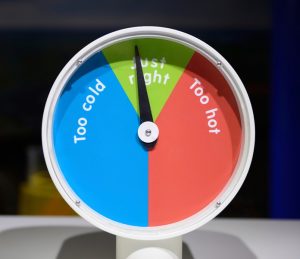 There are plenty of instances where “sounds too good to be true” will be applicable. This is not so with the heat pump. We understand your skepticism if you are not too familiar with these systems, but the fact is that you actually can use a heat pump to both cool your home effectively and to heat it with great energy efficiency. In today’s post, we’ll explore how it is that the heat pump is able to pull off this feat.
There are plenty of instances where “sounds too good to be true” will be applicable. This is not so with the heat pump. We understand your skepticism if you are not too familiar with these systems, but the fact is that you actually can use a heat pump to both cool your home effectively and to heat it with great energy efficiency. In today’s post, we’ll explore how it is that the heat pump is able to pull off this feat.
The underlying concept of how the heat pump heats and cools is actually quite simple. Don’t let that fool you into believing that the system itself or the services that it requires are simple, though. If you do decide to use a heat pump in Oxford, OH, you are going to need professional installation, maintenance, and, occasionally, repair services. When you do, remember that you can always count on our technicians to do the job—any job—right the first time.
First, You Need to Understand the Refrigerant Cycle
If you use an air conditioner to cool your home (or a refrigerator in your home, for that matter), then you are relying on the refrigerant cycle and its cooling capability. For the sake of system comparisons, we’ll focus on a central air conditioner today. A central air conditioner does not generate new “coolness”. Instead, the coolness that you feel as a result of running your central air conditioner is actually the absence of heat.
Heat pumps and central ACs follow the same process for cooling homes. The refrigerant evaporates in the indoor evaporator coil, which removes heat from the air. Then, that refrigerant travels out to the outdoor condenser coil. There, it is condensed and the heat that it has harnessed is released into the air outside. The cycle continues until desired temperatures are met in your home.
The Added Element: Reversing the Cycle
A heat pump has a component called a reversing valve, and that valve allows the flow of the refrigerant in the heat pump system to move in the opposite direction. The function of the coils is basically reversed, too. Now, in its heating mode, the heat pump evaporates refrigerant in the outdoor coil. Heat is drawn out of the air outside (yes, even when it is very cold out). Then the refrigerant is compressed. This boosts its thermal energy.
Now the refrigerant can travel indoors to be condensed, with the heat it releases being used to warm up the interior living space. Because no heat is generated, but instead transferred, only a small amount of electricity is used in the process. This makes the heat pump one of the greenest and most efficient systems that you can possibly use to heat your home.
If you have any questions about heat pumps and how they work, or if you just want to schedule a heat pump installation with pros that you can trust, just let us know.
